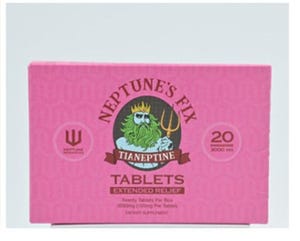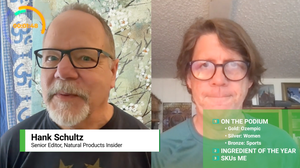Collaboration Critical to Cleaning Up Chondroitin Supply Chain
Weiguo Zhang, the president and CEO of Synutra Pure, Ltd., isn’t going at it alone. Here’s his story.

Frustration can be one of the drivers that lead to discovery, and working with acknowledged experts in chondroitin science is key to broad acceptance of that discovery.
I was drawn to studying chondroitin sulfate and analytical methods to verify material quality because of the increasing concern of adulteration in the chondroitin supply chain. About five years ago, when we re-entered the ingredient market with new and dedicated plant capacity for high purity chondroitin sulfate, the blighted business of chondroitin procurement was fraught with cheap materials that promised passing assay content. If you looked at the market essentials for this natural ingredient from food animal cartilage extraction, you knew something was not quite right when the price of cartilage material nearly washed out any possible profit if the market price of chondroitin was real.
Confronting faceless and fraudulent competition, the only way to break out was to arm the industry with testing methods to detect and deter adulteration. We needed to lay the groundwork, and then enlist the foremost experts to change the playing field.
Cetylprydinium chloride (CPC) titration had been the prevailing and monograph method for chondroitin assay. CPC would be a highly reliable assay method for chondroitin, barring interference from non-chondroitin sulfate glycosaminoglycans (GAGs) or other sulfated substance as adulterants. People who adulterate took advantage of the fact that CPC can be fooled. To counter this, we had to screen numerous analytical methods for chondroitin and focused on an existing monograph method called cellulose acetate membrane electrophoresis (CAME) that were much neglected by the industry but had shown promise of effective separation of known adulterants from chondroitin.
In 2012 and 2013, we collected various sample adulterants from the market, including an alginic acid and an unknown substance we called "Zero One" that acted with a surprisingly high assay interference of up to 235 percent of CPC value as chondroitin. To assemble data, I ran a basement wet lab in my house for more than a year and the electrophoregrams generated from the lab provided solid evidence that CAME was an effective tool to separate certain adulterants from chondroitin.
I started talking to Dr. Gabriel Giancaspro of the United States Pharmacopeia (USP) who oversaw the compendium dietary supplement standards. Gabriel pointed me to Dr. Nicola Volpi of Italy who ran an alginic acid sample I forwarded him on agarose gel electrophoresis and achieved similar separation. While we could separate and detect presence of adulterants, the identity of the adulterants remained to be revealed.
In early 2013, I worked with Dr. Y. F. Lam of the University of Maryland to produce Nuclear Magnetic Resonance signatures of "Zero One." Dr. Lam returned with intriguing NMR spectra, showing the absence of carbon in the material and revealing that the compound is not even an organic matter. I took this revelation to a Food and Drug Law Institute conference in September 2013 moderated by Dr. Daniel Fabricant, then director of FDA's division overseeing dietary supplements industry. Our publicity specialist, the Shelton Group, sent out a press release to key industry trade publications to alert people of this finding. The story generated huge interest in analytical science and standards communities. I reached out to standards and methodology groups including USP and AOAC International and was able to convene a team of top scientists in the area to determine the identity of chondroitin adulterants after CAME separation.
The ensuing endeavor involved Gabriel and Dr. Kristie Adams of USP, Dr. James Neal-Kababick of Flora Research, the late Dr. Mark Roman of Tampa Bay Research Laboratories and his associate Jana Hildreth, and Dr. Joseph Betz of National Institute of Health.
*****
The effort employed a number of relevant methodologies, including NMR for 13C heteronuclear single quantum coherence (HSQC) with ethanol fractionation of sample mixture, CPC, CAME, FTIR (mid-IR or MIR), and DSC. By these combined procedures, the team was able to compare signature peaks of the alginic acid adulterant with reference materials and to determine that the FTIR spectrum of "Zero One" matches that of documentary records of sodium hexametaphosphate (SHMP) and the DSC melting point of the adulterant also coincides with SHMP. These discoveries culminated in a peer-reviewed publication in the Journal of AOAC International. The findings again alerted the industry that if you do not tighten your quality practice and use the full suite of monograph methodologies for chondroitin, you may end up selling joint health supplements lased with adulterants including "Calgon," a detergent made of primarily SHMP.
While undertaking the journey of scientific discovery, we also kept the industry informed of our efforts. We maintained industry interest with regular progress reports and commentaries via trade media. We participated in educational sessions at trade shows, spoke at industry forums, and took every opportunity to share our conviction that the industry needed to adopt CAME in combination with CPC to screen out much-known adulterants, and that higher-than- monograph material standards needs to be used in ingredient sourcing.
We helped our customers by training their own analysts in their laboratories. We also interacted with influential trade groups. Immediately following the publication of the paper in December 2014, the United Natural Products Alliance (UNPA) advised its members to adopt CAME along with CPC based on quality of the authors and robustness of the research.
I took pride that I was able to pursue one of the world's largest chondroitin buyers to switch from a substandard 85 percent CPC material to an USP grade 90 percent material. For the past 12 months, we have seen the price of chondroitin sulfate hover at a tenable level, which may suggest less adulteration in the supply chain due to the fact that the industry is alerted and better equipped to detect adulteration.
Conventional wisdom, however, points to history and warns us that protection is always erected to be beaten. We are fully aware of that, and continue to remain vigilant to new developments in the market. We continue to drive the standard and methodology organizations' efforts on improvements by staying engaged.
In October, Synutra Pure presented at the 2015 AOAC annual meeting and at the 2015 International Nutrition and Diagnosis Conference (INDC) in Prague on the "Best Practices of Chondroitin Quality," again in collaboration with scientists from USP and with Dr. Volpi. Jana Hildreth, who has joined Synutra Pure, Ltd. as director of scientific affairs, chairs a number of AOAC and USP expert review panel working groups for chondroitin and other dietary ingredients. In addition to urging widespread adoption of CAME alongside CPC, we continue to advance and refine more sophisticated methodologies for chondroitin assay and identity, including HPLC with enzymatic digestion.
Synutra Pure's involvement in these programs seems to have been paid off well. Since 2013, the company has led the industry in sales of quality chondroitin ingredients. Synutra Pure intends to continue stay ahead on science, standards, and methodologies when it comes to this very important ingredient for joint health. Enlisting the knowledge and expertise of the leading experts in chondroitin testing and working closely with them has been key.
About the Author(s)
You May Also Like




.png?width=800&auto=webp&quality=80&disable=upscale)